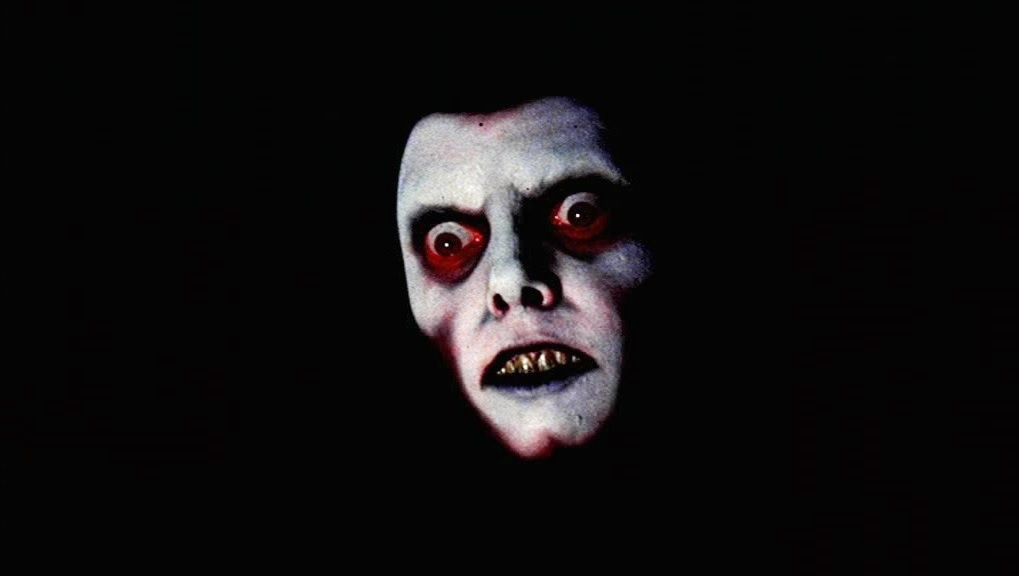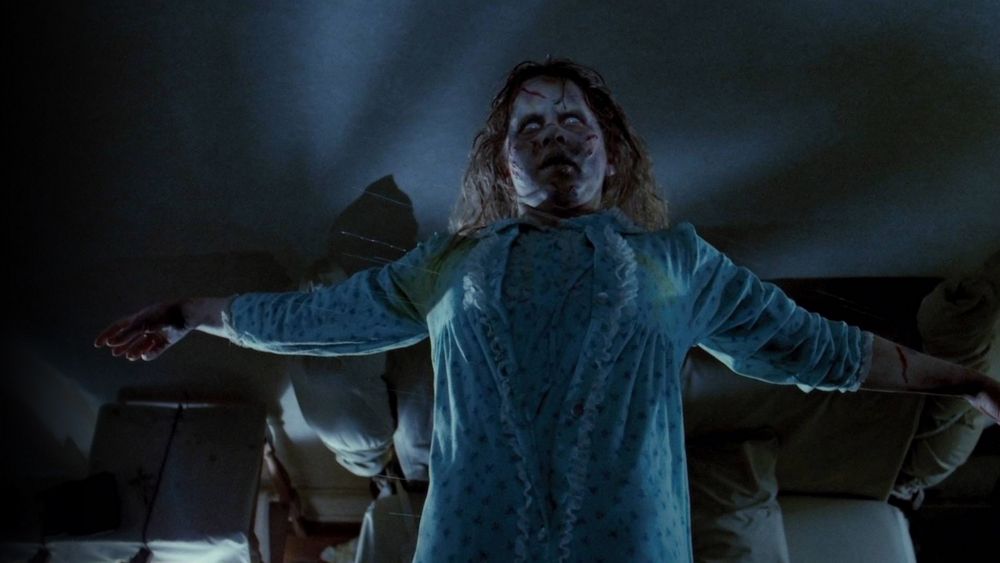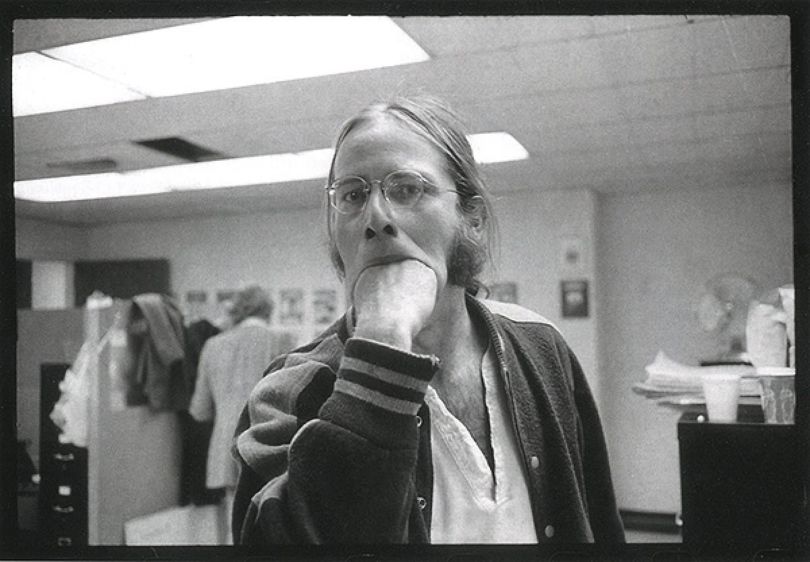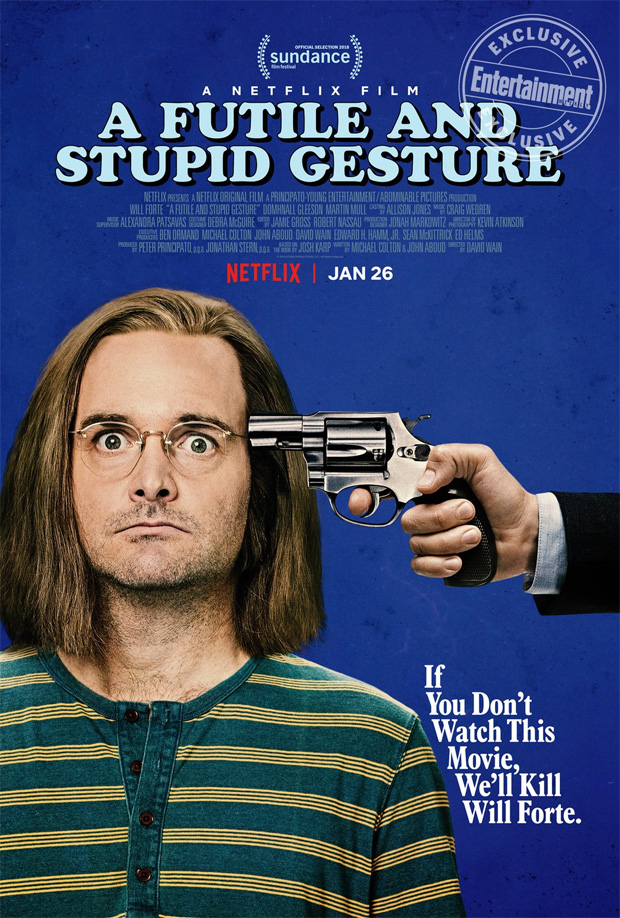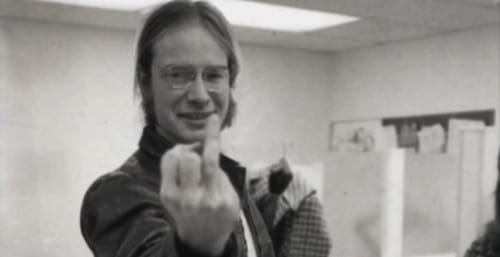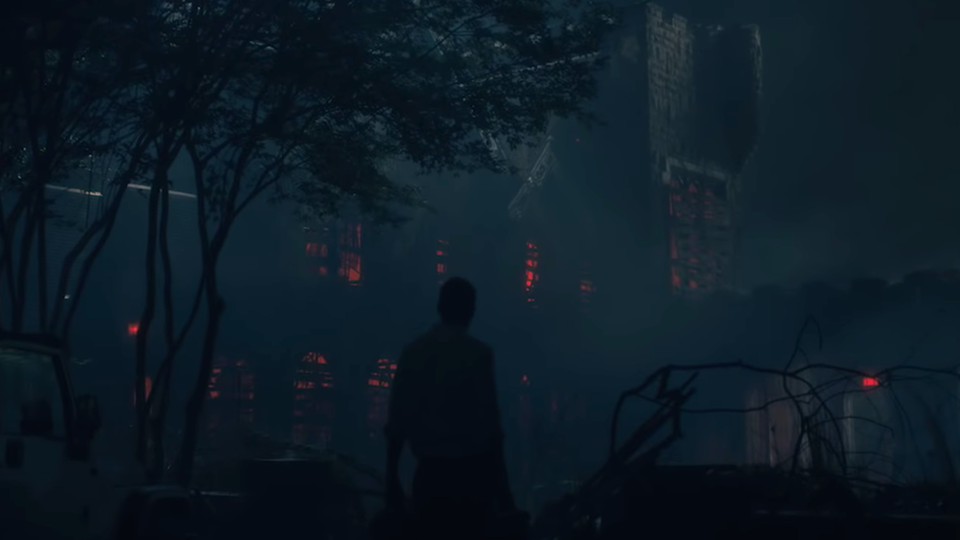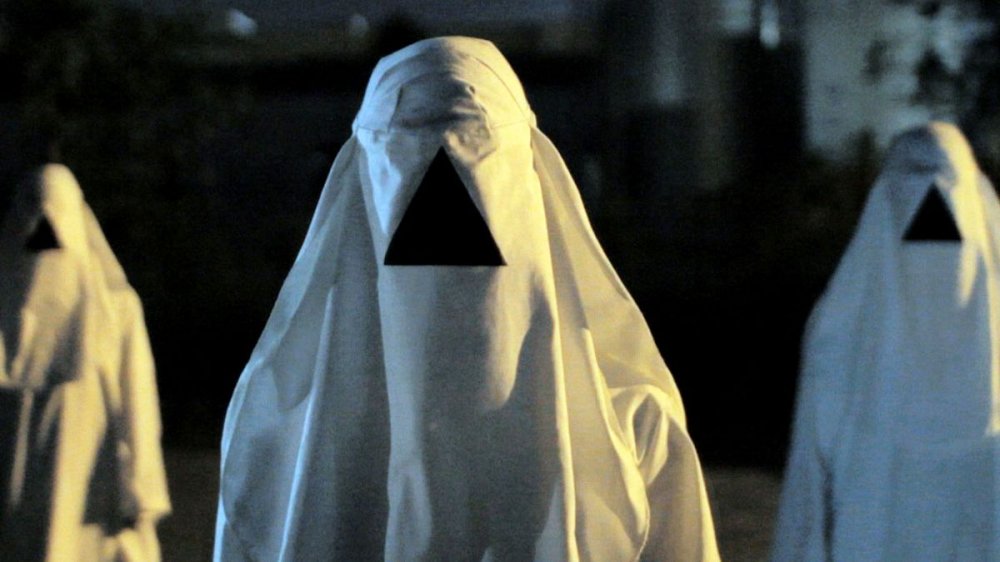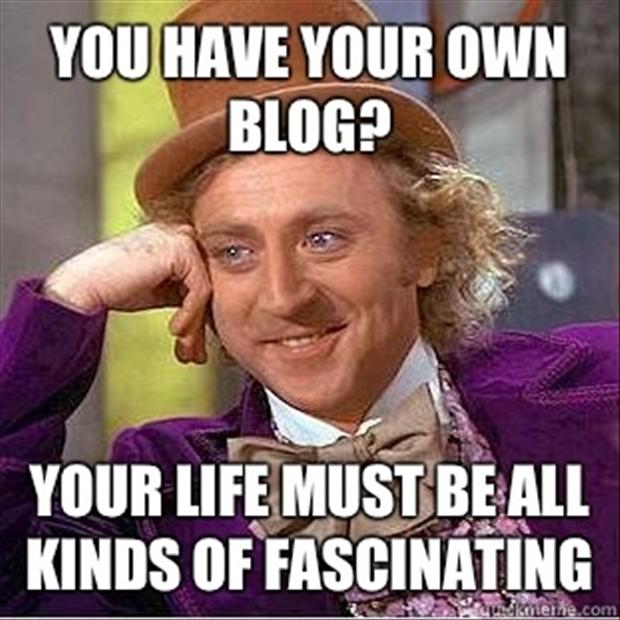This has been long-coming. I’ve run into it in a few of the past entries, most recently in my post on Ari Aster’s Hereditary, and I feel the need to confront it directly. The film represents a turning point in my appreciation of horror films, where things went from being fun and trope-heavy to disturbingly visceral and even threatening, having been raised in the Baptist church. The overall impact was not unlike those safety films you watch in wood shop class like this:
And yes, I was watching those around the same time I first encountered The Exorcist. I was in middle-school, already acquainted with the likes of Romero, Carpenter and Cronenberg (thanks to Fangoria magazine), but The Exorcist and I had been doing the Tallahassee Tango long before then.
Cut to late 1973. Late in the evening as well, with a five-year-old version of Your Humble Narrator curled up in bed as his mom turns on the AM radio and this plays:
Little me was immediately caught in a horror movie catch-22: If I had brought up the dreaded subject of “it’s giving me nightmares”, it would’ve become an obstacle to my seeing any more of the old Universal, Hammer and Amicus films that I loved then (and still do). So I kept it on the down-low, and often bothered my older sister about subletting space in her bed at night. I later monitored the movie from the latest issues of Famous Monsters of Filmland, then the go-to guide for all things macabre and cool:
And no, I don’t still have that issue — the regrets of age. To me, each photo was like a portal into a black-and-white Hell, where the damned soul of poor Linda Blair was spinning, floating and puking forth with demonic glee. Even Billy Graham (who my grandmother was a fan of) cast his dissent of the The Exorcist, stating that ‘The Devil was in every frame of that film’. That dread sort of yen for The Exorcist had built up in little me, one that I thought might get me in trouble with The Big Man Upstairs. I had officially entered that new realm of modern horror film — one that cast aside the Gothic trappings and conventions of the past, and given the game modern stakes. You know, unlike the ones in the Hammer movies ;D
Of course, as we all know, The Exorcist was originally a novel by William Peter Blatty. Blatty had been a comedy writer, even collaborating with director Blake Edwards, who is best known for his Pink Panther films. The Exorcist was more of a personal project for the author, taking a story he had heard about while attending Georgetown University about a “haunted boy” in St. Louis, Missouri as inspiration. That story — which has since become familiar mainly by association to The Exorcist — is known (to Wikipedia, anyway) as the Exorcism of Roland Doe. The Roland Doe scenario is itself the subject of many adaptations, including Possessed by Thomas B. Allen and the releases of The Haunted Boy: The Secret Diary of the Exorcist and The Exorcist File — which appear to be the same film, although The Haunted Boy (released in 2010) gets an IMDb rating of 4.1 while The Exorcist File (2014) rates at 5.6. Go figure.
Back to the introduction, with middle-school me and the book. I managed to get it checked out at the local library (I figured they felt they let me off easy, since I spent most of their time trying to borrow reference books), and eagerly chewed through it in a week. Sure, I had done my tours with Stephen King, Peter Straub and Ramsey Campbell (the latter two King himself recommended in Danse Macabre), but this was different. While not much in the way of plot, the book more than makes up for it with its detail and characterization. It’s a Grand Guignol of the highest order, locking dread Pazuzu against the world-weary Father Merrin, while Detective William Kinderman looks on in befuddlement. Yes, it’s all very Catholic with a weird Jewish topspin, but I loved it. Again, having been raised in the Baptist church, the ultimate fate of Regan McNeil — the aforementioned stakes in this particular gambit — wasn’t lost on me. The black-and-white nightmare from Famous Monsters now had a scenario, and — as Masha from Videodrome puts it:
Needless to say, I had to see the movie at this point. As mentioned here, the advent of cable television brought me within a hairs-breadth of The Exorcist — curled up at the top of the stairs, anxiously listening to what was transpiring in the den, and my family’s reaction to it. This did nothing but fuel the little demonic furnace that had been playing out in my head.
The film was written for the screen by Blatty, but director William Friedkin, fresh off his Oscar-winning film The French Connection, was supposedly non-plussed. He wanted the screenplay to be more like the novel, substituting sections of Blatty’s script for what he had previously written in the book. While they may have disagreed about the approach to the material, one thing was apparently never discussed. According to Friedkin, “Bill [Blatty] identified ‘The Exorcist’ as being a work about the mystery of faith. People call it a horror film. Blatty and I never spoke about a horror film. We made a film about the mystery of faith, which was his concept, his idea, his belief system.”
While Blatty came from a comedy background, Friedkin came from that of a documentarian, who got his start working at Chicago’s WGN-TV (where little me watched The Bozo Show — possible Bozo/Captain Howdy connection?). He would apply that gritty realism developed in those early years to The French Connection and The Exorcist. While it works great in the former, the latter really stood-out, as most horror films up until then had been much more stylistic affairs. Friedkin kept a tight set — never more than one take per shot, and his stage direction was often punctuated with gunfire. Friedkin says he adapted the idea from George Stevens, the director of The Diary of Anne Frank — to heighten the actors’ response to Nazi threat.
Friedkin’s want for immediacy and intimacy during the shoot ultimately caused problems with the cast. In addition to gunfire, he slapped Fr. William O’Malley (as Father Dyer, the groovy, piano-playing priest in the film) to gage the actor’s response to tragedy (the death of Jason Miller’s Fr. Karras). Ellen Burstyn and Linda Blair have both claimed to have been injured by harnesses designed by Marcel Vercoutere, the film’s special effects man, used aggressively at Friedkin’s urging. But all parties seemed to have conceded over the years, due more than likely to the film’s outrageous success.
Another outstanding factor of the production was Dick Smith. Like Friedkin, Smith got his start in television at WNBC in New York, and in his early career pioneered the use of multiple prosthetics (as opposed to masks) in makeup effects. He even literally wrote the book on do-it-yourself monster makeup back in 1965:
I never got my little hands on this book, but the likes of Rob Bottin (The Thing, Legend, Total Recall) and Greg Nicotero (Day of the Dead, Phantasm II, In the Mouth of Madness, The Walking Dead) did. According to his assistant on The Exorcist, Rick Baker (mentioned here, for brevity): “The Exorcist was really a turning point for make-up special effects. Dick showed that makeup wasn’t just about making people look scary or old, but had many applications. He figured out a way to make the welts swell up on Linda Blair’s stomach, to make her head spin around, and he created the vomit scenes.” Smith would later receive a well-deserved Academy Award (in 1984, for his work on Amadeus), but in my humble opinion, it was late in coming.
I finally got to see The Exorcist firsthand back in ’82 or ’83, when I convinced my mom I could handle it during one of our Friday-afternoon excursions to Hollywood Video. I’m thinking she figured it would be inevitable in any case, seeing as how I had already been enjoying the heretofore secluded gems of premium cable. I was thrilled. At long last, I could meet my nightmare face-to-face, and stare into its rolled-up eye sockets. It was love at first sight.
I thrilled to the film’s almost bi-polar pacing, going from moments of shock and violence to those of calm introspection — for better or worse. The deep unfathomable blacks and brilliant colors, from the dramatic opening in Northern Iraq to the frigid walls of Regan’s bedroom, and the rapid-fire editing punctuating the action along with that amazing score (which introduced me to the likes of Krzysztof Penderecki and Hans Werner Henze, in addition Mike Oldfield’s amazing Tubular Bells). I likened it at the time to being not unlike Star Wars, a film that had recently redefined another genre in similar fashion.
The Exorcist remains one of my all-time favorite films. It not only changed the horror film genre, but they way people thought about it. Here was a horror film with no inclinations of hiding its evil and chaotic intent, but instead thrust it onto screens and into the faces of the record number of cinema goers who clamored to see it, and continue to today. While not nearly as shocking as it was back in 1973, the film still manages to hammer through even the toughest layers of disbelief to fashion not simply a horror movie, but what its creators intended — a film about belief itself.






